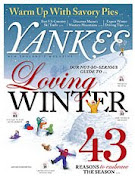
Today I'll cover cutting curves and follow-up with another how-to about getting great points, windows and combo shapes.
But (there's always a but, right) before I get started with curves I want to cover some craft knife basics. These are things I learned while getting my degree in graphic design which helped me 1. be less scared of using a knife (I know if you are new to paper crafting the blades can look scary) and 2. be better at every kind of cut from simple straight lines to complicated shapes.
So here are my basic tips:
- Always use a sharp blade.
Most of the time if you cut yourself it will be with a dull blade (a dull craft blade can still make impressive cuts on your finger though). The duller the blade the less control you have and the more likely the knife is to "jump" the paper/ruler and slice your fingers. Also using a sharp blade means you can make finer cuts with less pressure on your wrist and less tearing of your paper.
- Use a metal ruler.
- When cutting a straight line protect what you are cutting with the ruler.

This means the "good side" of what you are cutting should be under the ruler. That way if your blade goes off track and away from the ruler's edge you'll only be cutting into the scrap paper and not what you're trying to cut out.

You have to rotate your paper for each straight line you're cutting but trust me it's worth it. There is nothing more frustrating than having one more cut to make and accidentally slicing through your work!
Now that the basics are out of the way- Let's get to the curves.
I used markers to demonstrate how I approach each shape. Then cut them out to show you the results.
First up, I have this "U" or elongated crescent shape:

The key to cutting anything that's circular or arched is to approach the curve from opposite ends.
I started at one corner and cut toward the middle of the curve. Then turned my paper and did the same thing on either side so my cuts meet roughly in the center.


Something else to consider is where to cut first. Once you cut a large area there is more pressure on the remaining attached paper. Which becomes prone to movement and tears as you cut each line. Because of this, I usually start with the small areas and move to the bigger cuts.
To cut this shape I made my two cuts on the green line then while holding the shape to keep it stable I'd make my two cuts along the red line.

Holding the shape even if it's small is an important part of getting sharp smooth cuts with no tears in your paper. Here I've taken a picture of the shape next to my craft blade for scale- it's a pretty small shape.

Here's the finished cutout- nice smooth curves.

Next, I have a horseshoe or "C" shape.
I'll cut the curves the same way described above. It also has two little straight lines on either side which are an exception to the cut small areas first rule. Because these little lines connect to both curves once I cut them they'll put more pressure on each curve. Since these are small, straight lines the cuts are very easy. The curves are more difficult so I'll leave these straight areas until last.
Starting with the small curve- I make the two cuts that meet in the center.


Then the same for the large curve.


Last the two small straight lines are cut.

And here's the finished shape.

Finally, I have this swirl.

You can see from the picture that includes my blade that it's also pretty small. But it's possible to get nice smooth curves here too.
I start on the inside curve in the center because it's the smallest.

Then the outside curve in the center

Once those cuts were made I continued to cut down one side, then the other.
Last I cut the small straight line at the end to finish the shape.
Here it is all cut out.

I hope this "how to" helps you cut curves smoother and easier!






























